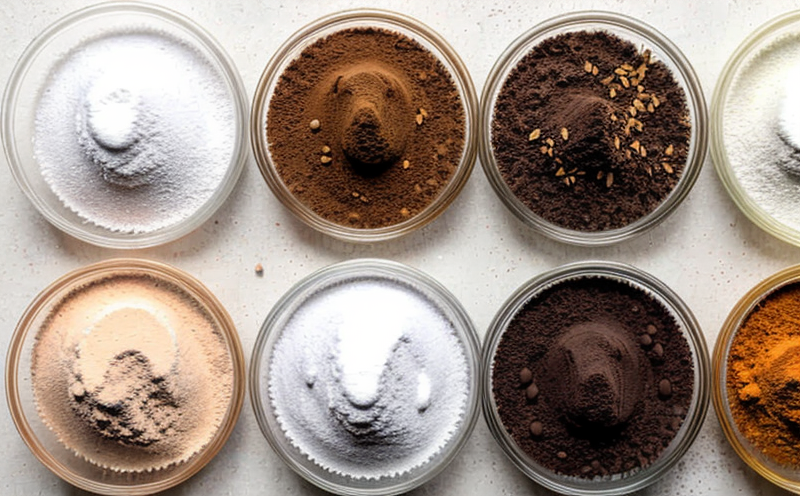USP Food Colorant Residue Analysis in Beverages
The United States Pharmacopeia (USP) [1] provides a comprehensive framework for ensuring the quality, safety, and efficacy of pharmaceuticals and food products. Among its numerous sections is USP , which focuses on the determination of colorant residues in beverages. This test method ensures that the levels of permitted food colorants do not exceed safe limits set by regulatory authorities.
Compliance with USP is crucial for manufacturers, especially those dealing with sweeteners and colorants, as it directly impacts consumer safety and brand reputation. The analysis involves several steps, including the extraction of colorants from beverages using appropriate solvents, followed by quantification through spectroscopic techniques such as High Performance Liquid Chromatography (HPLC) or Ultra Performance Liquid Chromatography (UPLC).
The importance of this test lies in its role in preventing food safety issues. Excessive consumption of artificial colorants can lead to various health concerns, including allergic reactions and potential carcinogenic effects. By adhering to USP , manufacturers ensure that their products meet the stringent quality standards set by regulatory bodies like the FDA (Food and Drug Administration) and EFSA (European Food Safety Authority).
The methodology for this analysis typically involves several steps:
- Sample Preparation: Beverages are filtered to remove any particulate matter, ensuring a clear sample for accurate quantification.
- Extraction: The colorants are extracted using solvents such as methanol or acetonitrile. The choice of solvent depends on the specific colorant and its polarity.
- Cleanup: To eliminate interfering compounds, the extract may undergo cleanup steps like solid-phase extraction (SPE) or liquid-liquid partitioning.
- Spectroscopic Analysis: The purified extracts are analyzed using HPLC or UPLC equipped with a diode array detector (DAD). This allows for both qualitative and quantitative analysis of the colorants present in the beverage.
The acceptance criteria for USP are stringent, ensuring that only compliant beverages reach the market. Any detection of colorant residues above the acceptable levels set by the FDA or other regulatory bodies is a violation and can result in product recalls and legal action.
Why It Matters
The safety and quality of food products, especially those containing sweeteners and colorants, are paramount. USP ensures that the levels of permitted colorants do not exceed safe limits, thereby safeguarding public health. Non-compliance can lead to severe consequences, including legal penalties, loss of market share, and damage to brand reputation.
Quality managers and compliance officers must ensure that their products meet these stringent standards. R&D engineers play a crucial role in optimizing the production process to maintain compliance while maintaining product quality. Procurement teams also need to ensure that raw materials used in colorant formulation are sourced from compliant suppliers.
Applied Standards
| Standard | Description |
|---|---|
| USP | This section provides the methodology for determining colorant residues in beverages, ensuring compliance with FDA regulations. |
| FDA 21 CFR Part 73 | Lists permitted colorants and their acceptable levels of use. |
| EU Regulation (EC) No 45/2009 | Establishes maximum levels for food additives, including colorants, in the EU market. |
Scope and Methodology
The scope of USP is to provide a standardized method for analyzing food colorant residues in beverages, ensuring compliance with regulatory limits. This service involves several key steps:
- Sample Collection and Preparation: Beverages are collected from various sources, including production lines and retail outlets. These samples undergo rigorous preparation to ensure accurate analysis.
- Extraction: The colorants are extracted using appropriate solvents based on their polarity and stability.
- Cleanup: To eliminate interfering compounds, the extracts undergo cleanup steps like solid-phase extraction or liquid-liquid partitioning.
- Spectroscopic Analysis: The purified extracts are analyzed using HPLC or UPLC equipped with a diode array detector. This allows for both qualitative and quantitative analysis of the colorants present in the beverage.
- Reporting: The results are meticulously documented, ensuring that compliance is verified and any non-compliance is identified promptly.
The methodology ensures that all steps are conducted under controlled conditions to minimize variability. This includes temperature control during extraction and handling of samples to prevent degradation of colorants.





